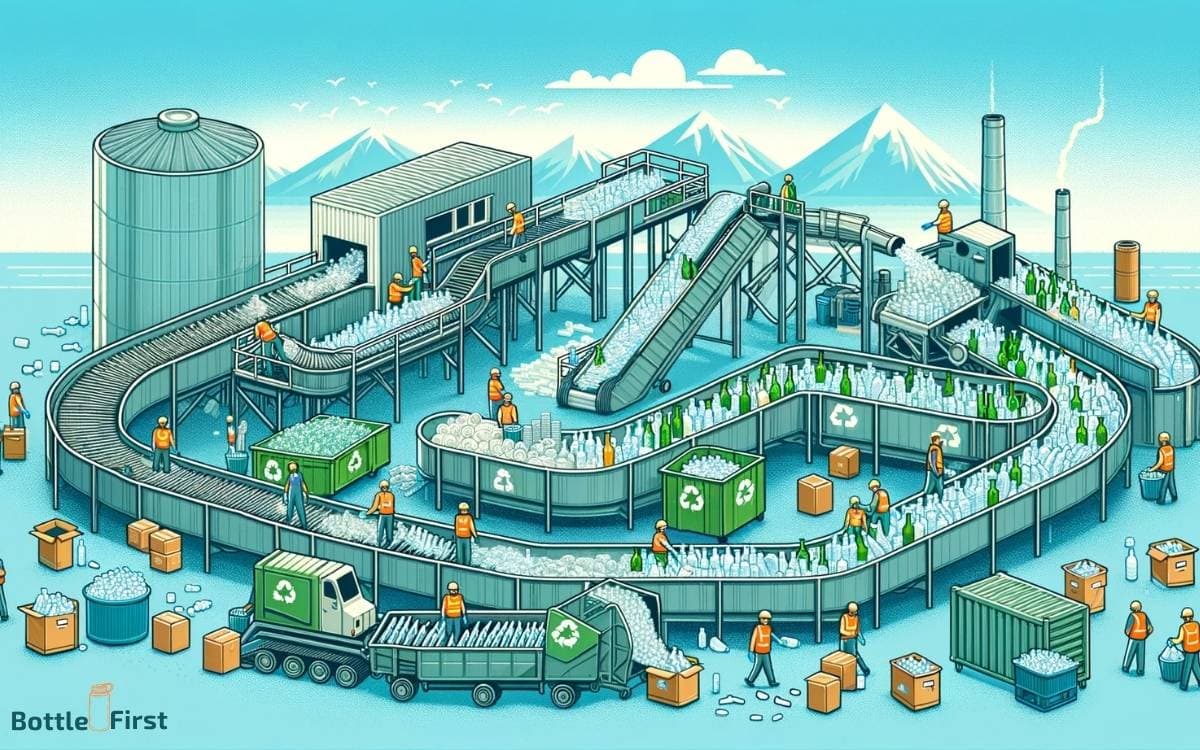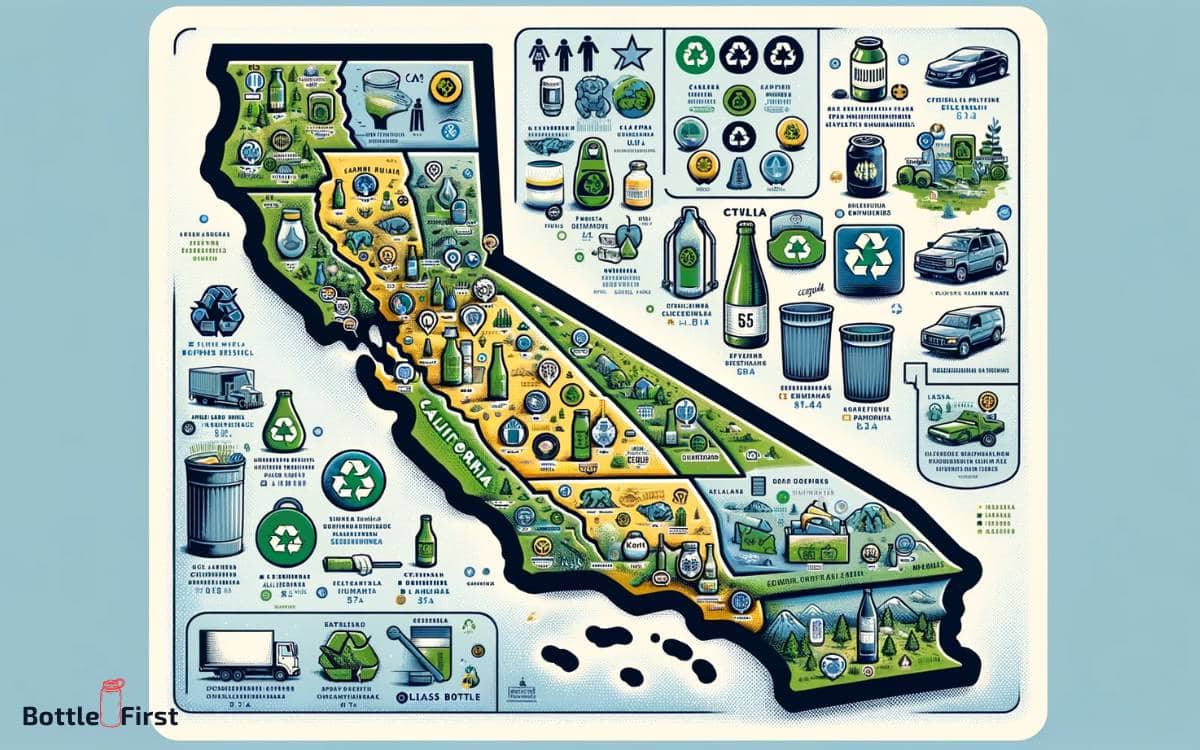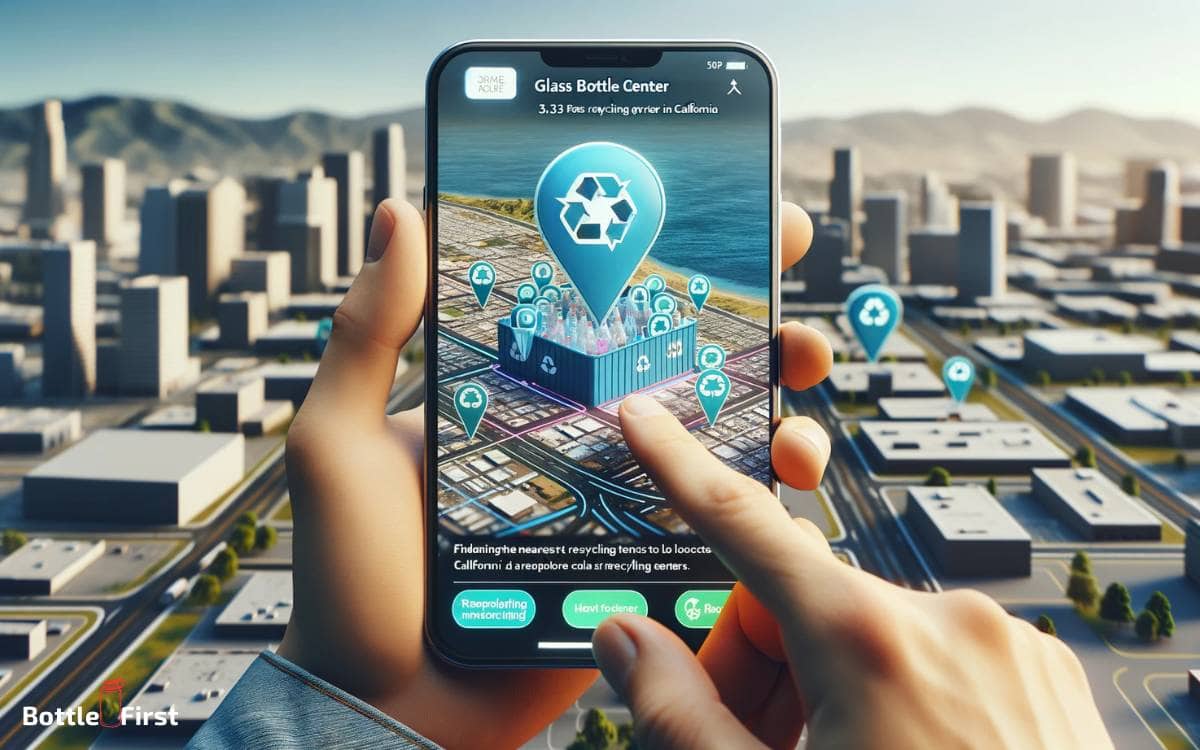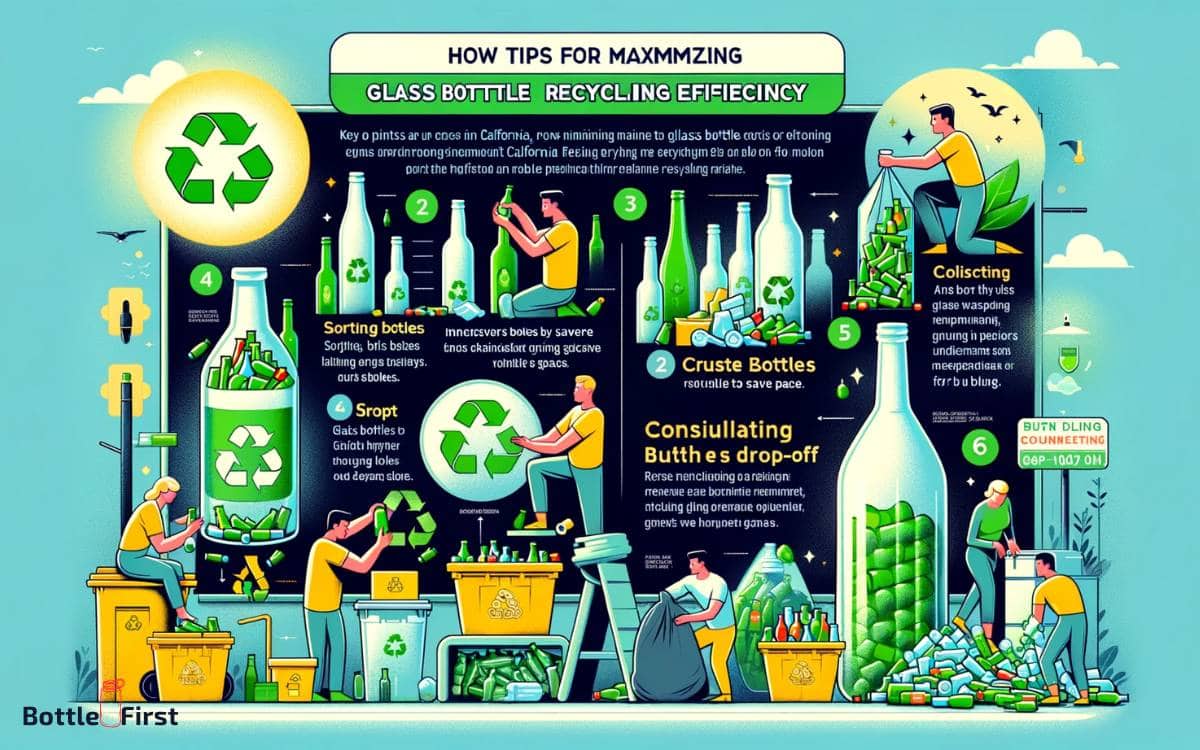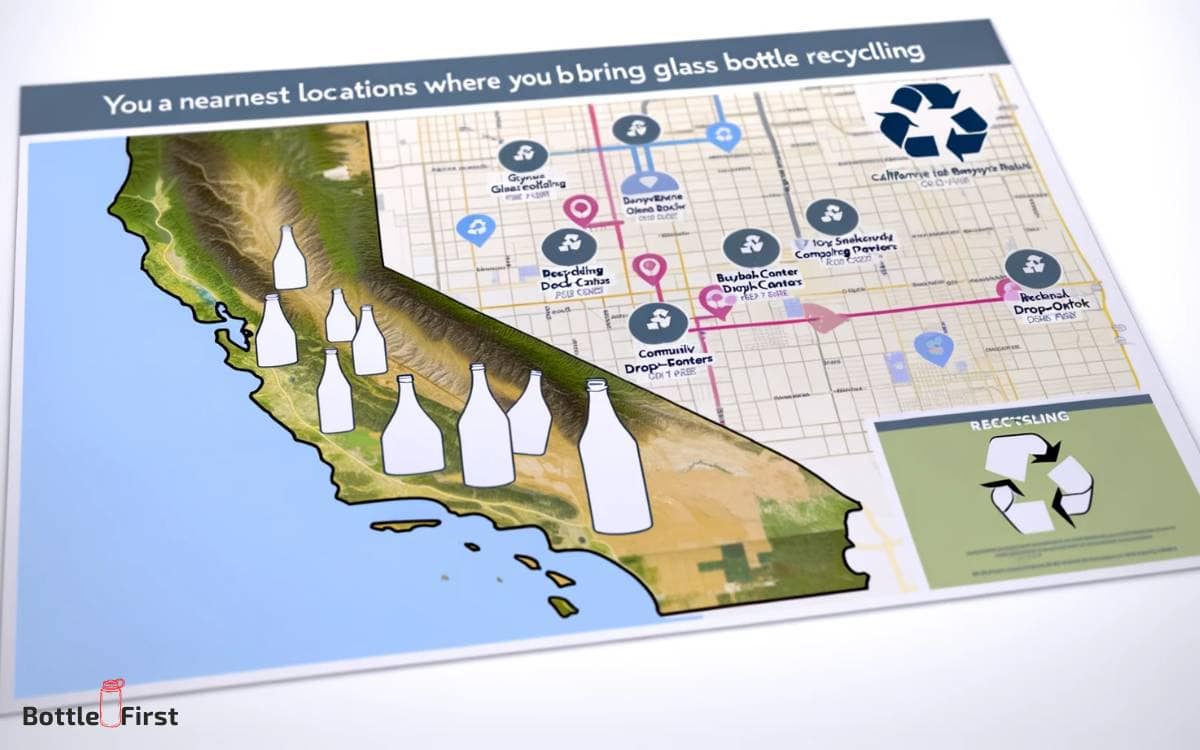How to Recycle Glass Bottles in California? 6 Easy Steps!
To recycle glass bottles in California effectively, residents should understand the state’s specific recycling guidelines, sort the glass by accepted types, clean them, and take them to a local recycling center or participate in curbside programs.
California has a robust recycling program that includes the recycling of glass bottles.
Here are some quick steps:
Ensure a greener future by recycling your glass bottles in California, following local guidelines to make every bottle count.
Key Takeaway
Online search engines, recycling apps, and local waste management facilities can assist in finding the nearest center.
Step 1: Understanding California’s Glass Bottle Recycling Laws
To understand California’s glass bottle recycling laws, you need to know the regulations that have been in place since 1986.
California’s Bottle Bill, also known as the California Beverage Container Recycling and Litter Reduction Act, was implemented to reduce litter and promote recycling.
The law requires a refund value on eligible beverage containers, including glass bottles, to incentivize consumers to recycle.
It also mandates that retailers pay California Redemption Value (CRV) for each eligible container sold and establish a convenient system for consumers to return empty glass bottles for recycling.
Understanding these regulations is crucial for both consumers and businesses to ensure compliance and contribute to the state’s sustainability efforts.
Step 2: Identifying Accepted Glass Bottle Types
When it comes to identifying accepted glass bottle types for recycling in California, it’s important to understand the specific guidelines in place.
Different types of glass bottles may have different recycling requirements, so be sure to check the regulations for each type.
Common glass bottle types such as clear, amber, and green are generally accepted, but it’s essential to familiarize yourself with the specifics to ensure proper recycling.
Accepted Glass Bottle Types
Ensure that all of your glass bottles are clean and free of any non-glass materials before recycling them in California.
To effectively recycle glass bottles in the state, it’s important to be aware of the accepted glass bottle types.
Here are the types of glass bottles that are typically accepted for recycling in California:
- Clear Glass Bottles: These are commonly used for packaging food and beverages.
- Green Glass Bottles: Often used for packaging wine, beer, and other beverages.
- Brown Glass Bottles: Typically used for packaging beer and certain types of liquor.
- Blue Glass Bottles: These are less common but are still accepted for recycling in many areas.
Recycling Guidelines for Glass
When recycling glass bottles in California, ensure you identify and separate the accepted glass bottle types, such as clear, green, brown, and blue glass bottles, to facilitate their appropriate recycling.
It’s important to remove any non-glass materials like caps, corks, or plastic rings, as these can hinder the recycling process.
Once you’ve separated the glass bottles by color, check for any contamination or residue, and rinse them thoroughly before recycling. Additionally, it’s crucial to avoid mixing different types of glass, as this can affect the quality of the recycled material.
By adhering to these guidelines, you can contribute to the efficient recycling of glass bottles, reducing waste and conserving resources.
Step 3: Locating the Nearest Glass Bottle Recycling Center
You can easily locate the nearest glass bottle recycling center by using online search engines or contacting your local waste management facility.
Here’s how:
- Online Search: Use search engines to find the nearest glass bottle recycling center by entering your location and ‘glass bottle recycling center’ into the search bar. Many recycling centers are listed online.
- Recycling Apps: Consider using recycling apps that can pinpoint the nearest glass bottle recycling centers based on your current location. Some apps also provide additional information such as operating hours and contact details.
- Local Waste Management Facility: Contact your local waste management facility to inquire about the nearest glass bottle recycling center. They often have detailed information and can guide you to the closest facility.
- Community Bulletin Boards: Check community bulletin boards, local newspapers, or social media groups for information about nearby glass bottle recycling centers or events.
Step 4: Preparing Glass Bottles for Recycling
To prepare glass bottles for recycling, rinse them thoroughly to remove any residue or contaminants. Ensure the bottles are completely empty before rinsing to prevent contamination.
Once rinsed, remove any metal or plastic caps and discard them in the regular waste bin. It’s not necessary to remove labels, as they will be removed during the recycling process.
Here’s a simple guide to preparing glass bottles for recycling:
| Step | Instructions | Purpose |
|---|---|---|
| Rinse | Thoroughly rinse the bottles with water to remove any remaining liquid or residue. | Removes contaminants and prevents odors. |
| Remove Caps | Take off metal or plastic caps and dispose of them in the regular waste bin. | Prevents contamination during recycling. |
| Label Removal (Optional) | You do not need to remove labels, as they will be removed during the recycling process. | Streamlines the recycling preparation process. |
Step 5: Maximizing Glass Bottle Recycling Efficiency
After preparing your glass bottles for recycling by rinsing and removing caps, you can maximize efficiency by ensuring they’re sorted according to color at your local recycling center.
To further enhance the recycling process, consider the following steps:
- Crush Bottles: Crush the glass bottles to save space and make transportation more efficient.
- Use Recycling Apps: Explore recycling apps that help locate the nearest recycling centers and provide information on their specific requirements for glass recycling.
- Education and Outreach: Advocate for educational programs in your community to raise awareness about the importance of glass recycling and the proper methods for doing so.
- Support Innovation: Stay informed about new technologies and innovations in glass recycling to support and promote sustainable practices.
Maximizing glass bottle recycling efficiency not only benefits the environment but also contributes to creating a more sustainable future.
Step 6: Supporting California’s Glass Bottle Recycling Initiatives
Supporting California’s glass bottle recycling initiatives requires active participation and commitment to sustainable practices. One way to get involved is by supporting local businesses that prioritize recycling and sustainability.
Below are some innovative California-based businesses that are leading the way in glass bottle recycling:
| Business Name | Initiative Description |
|---|---|
| RePlanet | Operates recycling kiosks that pay individuals for their glass bottles |
| Glass Bottle Recycling Co. | Offers doorstep collection services for glass bottle recycling |
| Eco-Friendly Brewery | Utilizes recycled glass in their bottle production process, promoting a circular economy |
| Community Recycling Center | Hosts educational workshops and events to raise awareness about glass recycling |
Where Can I Take Glass Bottles for Money
To recycle glass bottles for money, you should be aware of a few key points:
Payment for Recycling Glass Bottles:
While recycling glass bottles won’t make you rich, it can provide some extra cash. Most states offer between five cents and fifteen cents per pound of glass.
For instance, bringing 100 pounds of bottles to a recycling center could earn you about five dollars. The amount you’ll receive varies by state and the weight of the bottles.
Types of Recyclable Glass Bottles:
Most glass bottles are acceptable for recycling, but some are not. Typically, recyclable bottles include beer, soda, malt liquor, wine, and certain types of beverage and food bottles like pickle jars.
Items like frosted glass jars, Pyrex dishes, and wine glasses are usually not accepted.
States with Bottle Deposit Programs:
Not all states allow you to get money for glass bottle recycling. Only states with Container Deposit Legislation (CDL), commonly known as Bottle Bills, offer refunds for recycled glass bottles.
These states include California, Connecticut, Hawaii, Iowa, Massachusetts, Maine, Michigan, New York, Oregon, and Vermont.
Maximizing Rewards:
To maximize your rewards from recycling, know which stores accept bottle returns and organize your bottles by type and size for efficiency. Keeping track of your collection and being prepared when you go to the store can help you earn more.
Recycling Responsibly:
When recycling bottles for money, it’s important to rinse them and place them neatly into designated bins or collection points to prevent contamination. Also, avoid littering and dispose of bottles properly to respect the environment.
Before you start collecting bottles for recycling, it’s crucial to check your local state laws and regulations to understand which types of glass are accepted and the specific procedures for recycling in your area.
Remember, not all states offer financial incentives for recycling glass bottles, and the rules can vary significantly from one state to another.
Where to Bring Glass Bottles near Me
To find a location near you for recycling glass bottles, you have several options:
Recycling Center Locator:
A useful tool is the Glass Recycle Center Locator which can help you find the nearest facility to recycle your glass bottles.
This tool allows you to search for local glass recycling locations and provides details on what types of glass items can be recycled. It’s important to note that not all glass items are recyclable, so make sure to check which items are accepted.
Interactive Glass Recycling Map:
The Glass Recycling Coalition offers an interactive map where you can search by location, including your address, city name, county name, or ZIP code, to find the nearest material recovery facility (MRF), glass processor, end-market, or large city drop-off locations that accept glass.
Waste Management (WM) Drop-off Locations:
WM provides information on landfills, recycling centers, and waste drop-off locations that could include facilities for glass recycling. You can visit their website to find more details and locate the nearest drop-off location.
Before visiting a recycling center, remember a few tips:
- Clean your glass bottles before recycling. This doesn’t require extensive cleaning but just enough to remove most residues.
- Some recycling centers may have specific requirements, like separating glass by color or removing labels and caps, so it’s good to check their guidelines.
It’s great to see your interest in recycling and contributing to a more sustainable environment!
Conclusion
Congratulations on taking the first step towards a greener California by recycling your glass bottles.
By doing so, you’re helping to reduce landfill waste, conserve energy, and protect the environment. Keep up the great work and continue to support California’s glass bottle recycling initiatives.
Together, we can make a significant impact and create a more sustainable future for generations to come.
